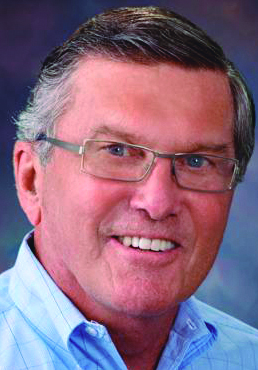The holiday season is a wonderful time for family gatherings and festive parties. The presence of alcoholic beverages is especially more prominent as we enjoy our eggnogs and toast in the New Year. Those who drink responsibly can appreciate the special holiday cheer while balancing it with good food and plenty of water. We’ve recently been told that alcohol in moderation may even have some health benefits, especially for the heart. On the other hand, too much alcohol increases the risk of health problems and could damage your heart. It is associated with some 100,000 deaths yearly from injury and disease with most alcohol deaths occurring in young people. Alcohol has also been found to be the direct cause of at least seven different forms of cancer.
A “drink” is defined as a glass of wine (4-5 oz.), a bottle of beer (12 oz.) or a shot of liquor (1.5 oz). Most people are surprised to learn that all these drinks contain an equal amount of alcohol. Or to put it another way, the amount of alcohol in one standard bottle of wine equals one six pack of light beer and 2/3 pint of hard liquor. Moderate intake is no more than one drink per day for women or two drinks for men, and even less for those over 65. Of those who drink, up to two-thirds of women and one-half of men, admit to exceeding that amount.
Many people find it hard to admit they have an alcohol problem. Much self-denial is involved. Often those around a heavy drinker see the problem before the individual does. How can one tell if they are having a problem with alcohol? The following are a few characteristics of someone who may be on the road to alcoholism:
- Thinking about drinking all the time.
- Trying to, but unable to quit,
- Drinking more than you planned, such as thinking of having one or two drinks with dinner, then continuing to drink all night.
What causes alcoholism? No one knows for sure. A family history of alcohol abuse is common. Men are more likely to be alcoholics than women. Alcohol is often used to “self-medicate” in an attempt to alleviate anxiety, stress, depression, loneliness and anger. For those who think that alcohol will help them to sleep better, quite the opposite is true. One may fall asleep easier but have a difficult time staying asleep.
Excessive alcohol use is related to many health problems such as liver damage (cirrhosis), higher risk of certain cancers, high blood pressure, high cholesterol and increased abdominal fat which puts the heart at increased risk. Other effects of alcohol include stomach pain due to bleeding ulcers or severe irritation (gastritis). Psychological effects of heavy drinking include depression, anxiety, insomnia and sexual dysfunction. Alcohol may have adverse effects on a baby during pregnancy, such as fetal alcohol syndrome and birth defects.
Alcohol also affects medication. Severe depression can occur from alcohol’s effect on narcotic pain medication and tranquilizers. It can also potentiate the effects of sleeping medication. Alcohol can inhibit the action of coumadin, a commonly taken blood thinner, and when consumed with an antibiotic called Flagyl, can cause a very unpleasant physical reaction. Patients often ask if they can drink alcohol while taking other antibiotics. I know that those who drink regularly will do so no matter what medication they are taking. The literature says that alcohol may lessen the effect of the antibiotic and may increase its side effects. My advice is to stop drinking while taking an antibiotic. If you choose to continue drinking while taking any medication, do so in moderation knowing that there are potential negative effects. Talk with your doctor about the effects of alcohol and medication.
Suggestions to help moderate your alcohol consumption if you choose to drink are:
- Pay attention to how much you pour
- Do not binge drink
- Most importantly: If you choose to drink, DO NOT DRINK AND DRIVE. Always have a designated driver.
The bottom line is that if you choose to drink, do so in moderation.
Terry Hollenbeck, M.D., is a retired urgent-care physician at Palo Alto Medical Foundation Santa Cruz in Scotts Valley. Readers can view his previous columns on his website, valleydoctor.wordpress.com, or email him at th*************@***il.com.













